What are the Blue-Eyes variants?
Synchro
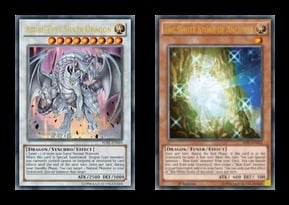
The "classic" build, most similar to its heyday. It focuses on Blue-Eyes Spirit Dragon's ability to tag into Azure-Eyes Silver Dragon, protecting your high-damage boards. In conjunction with Azure-Eyes, Synchro variants can oppress Pendulum and Paleo match-ups. Synchro variants have ample amounts of grind game, with tons of revival spells and The White Stone of Ancient's GY effect. Return of the Dragon Lords' GY effect can even cover Azure's weakness to being run over by cards like Number S39: Utopia the Lightning - it doesn't start a chain!
Other than Azure-Eyes, Blue-Eyes Spirit Dragon can tag into Ancient Fairy Dragon to Special Summon another Level 1 Tuner to Synchro for Crystal Wing Synchro Dragon. Even if Azure-Eyes is run over, you can Synchro Summon Cloudcastle to revive it, and XYZ Summon True King of All Calamities!
XYZ
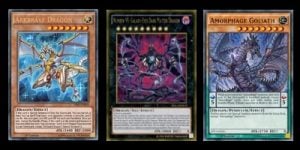
XYZ variants are explosive and dominating. By using Number 95: Galaxy-Eyes Dark Matter Dragon's mill effect, it can send Amorphage Goliath and Arkbrave Dragon, XYZ variants can steal games where the opponent does not draw removal. On your opponent's Standby Phase, Arkbrave Dragon will revive Amorphage Goliath, meaning your opponent cannot summon monsters from the Extra Deck. Return of the Dragon Lords benefits from this variant as well, protecting Goliath from mass removal.
Other than Dark Matter, the Deck also has an easier time summoning big boss monsters like Number 38: Hope Harbringer Dragon Titanic Galaxy. It also has significantly less dead draws due to having a smaller amount of Normal Summons compared to the tuner-centric Synchro variant.
Chaos MAX
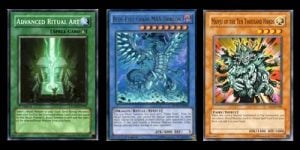
The most offensive variant, Blue-Eyes Chaos MAX Dragon serves as both a pressure tool and a self-protecting boss monster. Unlike the other variant's boss monsters, Chaos MAX does not occupy the Extra Monster Zone. In a high roll situation, Chaos MAX can be accompanied by Azure-Eyes or Number 38: Hope Harbinger Dragon Titanic Galaxy.
The ease of summoning Chaos MAX is not to be understated. Most builds run four to five Ritual Spells, Manju of the Ten Thousand Hands, and can search Chaos MAX with The Melody of Awakening Dragon. However, this consistency is the most easily disrupted by Ash Blossom & Joyous Spring, as opposed to Synchro or XYZ variants. The latter is harder to stop with hand traps, but their combo pieces - Tuners and cards like Ancient Rules respectively - have to be drawn.
What are the Differences in Non-engine Cards?
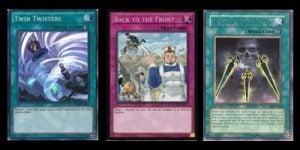
While each Blue-Eyes variant has similar engine cards, they all have entirely different goals. Choose tech and removal with this in mind.
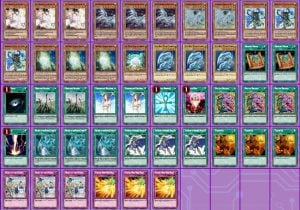
The greatest boon of Synchro variants is its ability to hold on to boards, and continuously summoning Dragon Spirit of White. Thus, cards that may revive either card would benefit this game plan, such as Back to the Front. Cards that may send Ancients to the GY apply pressure and accelerate Dragon Spirit's summon. On your turn, Dragon Shrine can achieve this. Phoenix Wing Wind Blast can send Ancients on the opponent's turn, and can blow out Pendulum match-ups. This also solves having too many cards in hand that require a Normal Summon.
Speaking of which, the Normal Summon in Blue-Eyes variants are greatly important. Clearly, in a Synchro variant, tuners are the required Normal Summon. This is important when considering support such as The King of D.
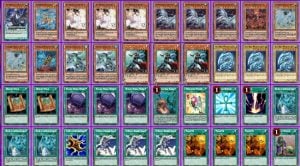
XYZ variants rely heavily on dropping Goliath, but it needs to be able to protect it going first or second. Interrupted Kaiju Slumber is the perfect out to wide boards, and gives you a Level 8 to XYZ Summon with. Furthermore, the level 8 Kaijus can be discarded with Trade-In or The Melody of Awakening Dragon.
Foolish Burial Goods is an unorthodox choice, but it makes a package of advantage with The King of D. Both cards can use Metalfoes Fusion as a pseudo-Upstart Goblin. The King of D. fits snugly into this variant, replacing Tuners since the goal of the deck is to summon Dark Matter. The King of D. is especially great for the XYZ variant because it can search for The Flue of Summoning D. to complete a combo and unbrick an otherwise unsalvageable hand, or fetch combo pieces with The Melody of Awakening Dragon.
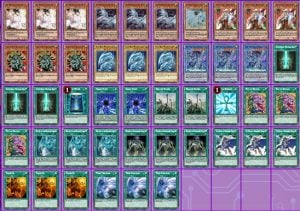
Chaos MAX variants crave the ability to steal games. It can do so against Trickstar and Paleozoic with ample S/T removal. Specifically, the ability to bait out Scapegoat and Paleozoic summons is critical for the Deck, so cards like Twin Twisters are critical. It also wants to play mass "removal" like Swords of Concealing Light, which double as OTK tools in conjunction with Chaos MAX's double piercing damage. Unfortunately, Manju of the Ten Thousand Hands is necessary for consistency in drawing Advanced Ritual Art, so The King of D. should not be played.
An important fundamental in playing this deck is to be able to bait Ash Blossom & Joyous Spring. It can negate Advanced Ritual Art, leaving you defenseless, so it's more optimal to let any other search card be negated before that happens. Unfortunately, Spell-wise, Pot of Desires is the best bait, being a high-priority target that doesn't make you discard a card. Manju can also work if you already have a Ritual Spell and Chaos MAX in hand.
PSY-Framegear Gamma could be considered to negate hand traps. However, the consistency of Chaos MAX decks should not be overestimated; the deck has enough to consistently summon MAX, but just enough. Any more dead draws that don't have synergy with Trade-In risks losing before the game begins.
Which Variant is Most Suited For this Meta?
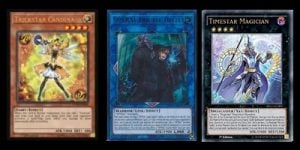
Each Blue-Eyes variant has solid match-ups against the meta of today. Synchro variants can bully Pendulum decks by banishing scales and Azure-Eyes protecting the board. XYZ variants oppress SPYRAL and Trickstar by limiting their Extra Deck. Chaos MAX can unexpectedly swipe games from Trickstar and rogue decks. Right now, it would seem XYZ variants have the upper hand, but with a tri-deck format like this, the most popular deck changes frequently! The key to playing Blue-Eyes is to understand the purpose of each variant as we have here, and apply that logic to the current meta.




